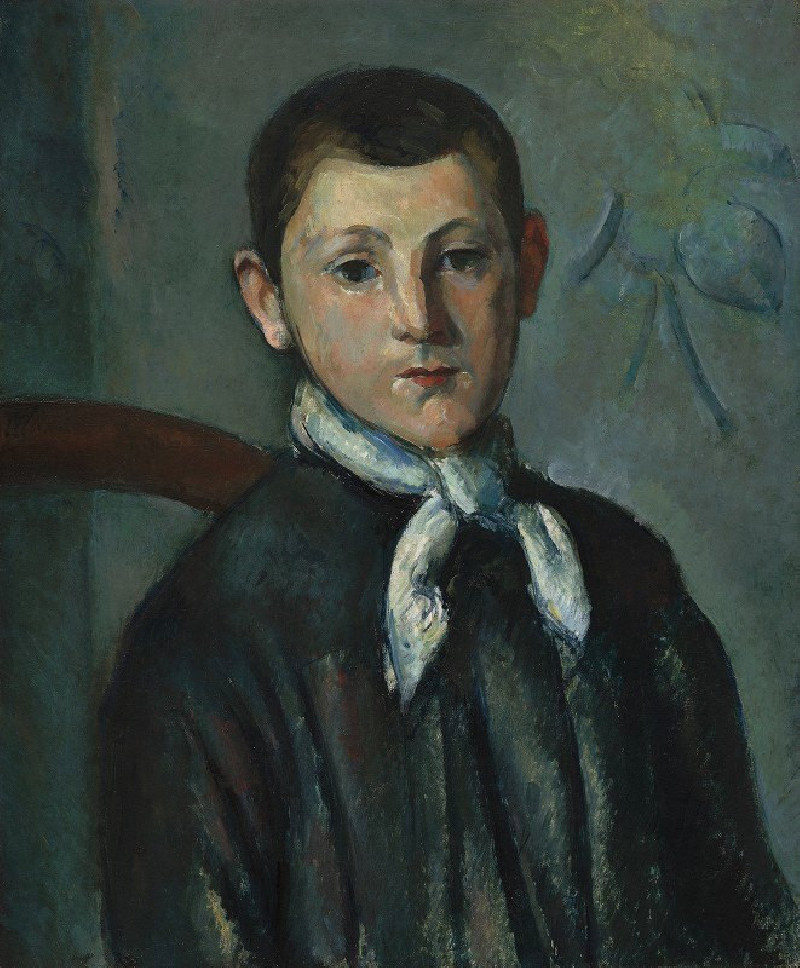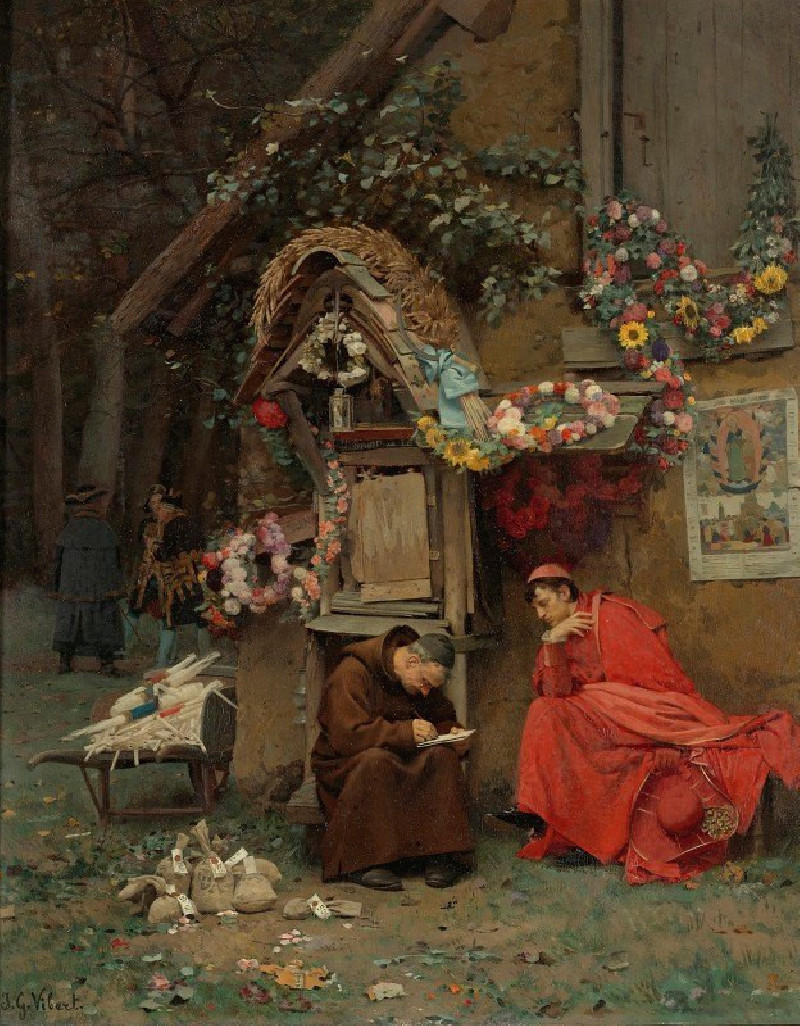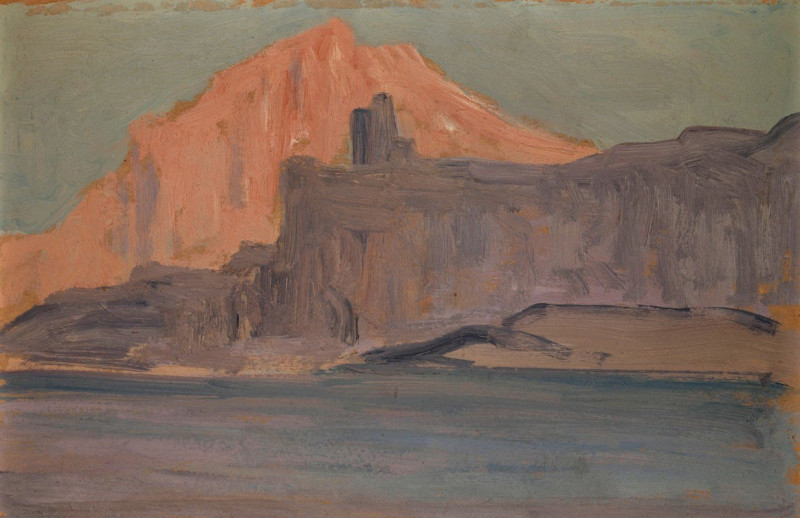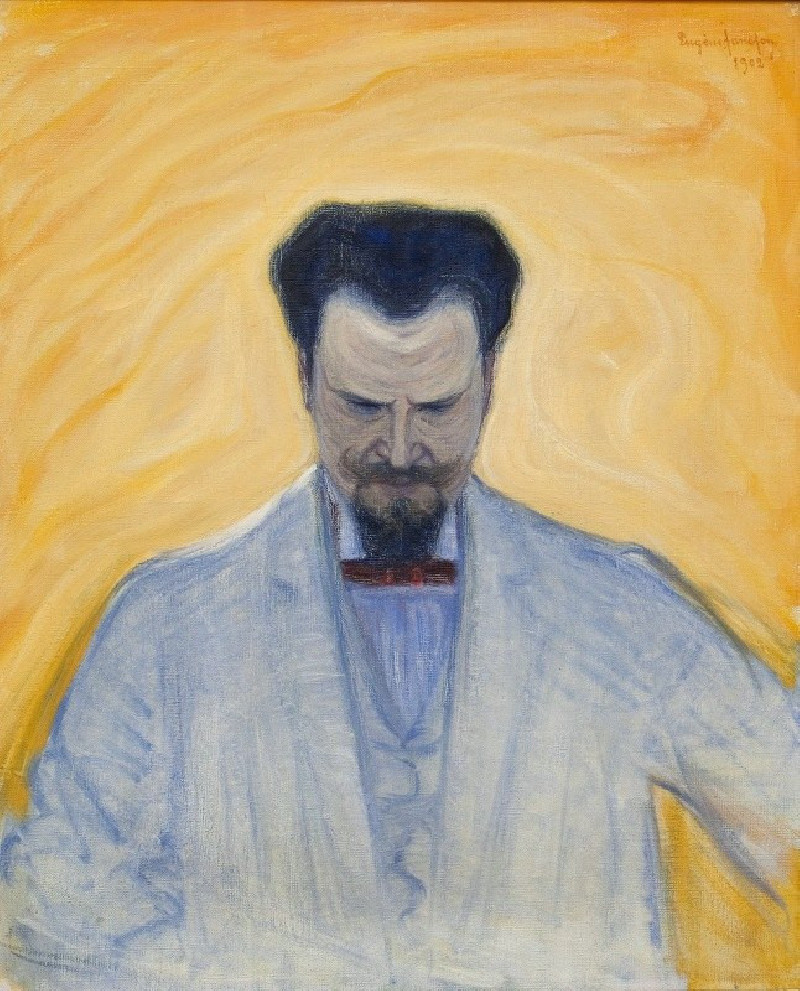Fruit and a Jug on a Table (circa 1890)
Technique: Giclée quality print
Recommended by our customers
More about this artwork
Paul Cézanne's "Fruit and a Jug on a Table," painted circa 1890, is a striking example of his mastery in still life, and his unique approach to form and color that bridges the late 19th century Impressionism and the early 20th century Cubism. This painting features a simple yet profound composition that draws viewers into a moment of everyday tranquility.At the center of the artwork lies a plate brimming with vibrant, round fruits that invoke a sense of lush abundance. Each fruit, with its meticulously rendered color gradients and tangible volume, seems to pulse with life. Their colors vary from deep reds to bright oranges and soft yellows, showcasing Cézanne’s skillful manipulation of hues and his understanding of how light can define and enhance form.To the right, a robust earthenware jug with a rustic finish and a curvy handle anchors the composition, offering a visual counterpoint to the soft, organic shapes of the fruit. Its placement not only balances the image but also enhances the depth of the scene, guiding the eye through the painting's textured landscape.The background and the table are depicted with broad, loose strokes of blues and greens, contrasting with the detailed treatment of the items on the table. This selective focus mimics the way the human eye perceives its surroundings, contributing to the painting's immersive effect."Fruit and a Jug on a Table" is not just a depiction of objects; it is an exploration of color, shape, and the boundary between representation and abstraction. As viewers, we are invited not only to look but also to feel the textures and the atmosphere, making the scene palpably alive.














































![Die Wölfe (Balkankrieg) [The Wolves (Balkan War)] (1913) reproduction of painting by Franz Marc. ALL GICLEE PRINTS](https://reprodukcijos.lt/38850-large_default/reproduction-of-die-wolfe-balkankrieg-the-wolves-balkan-war-1913.jpg)